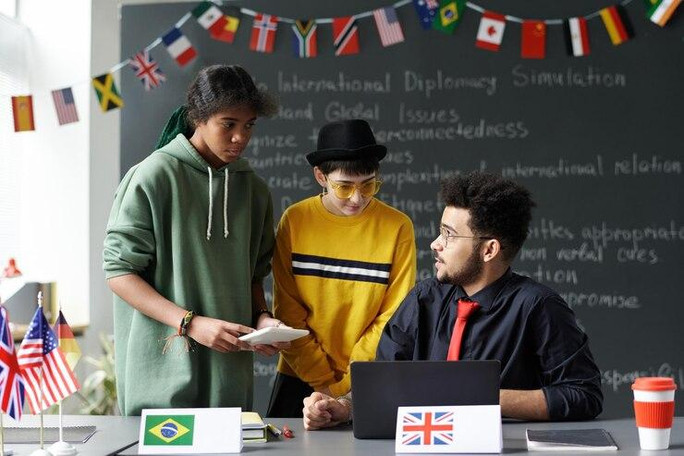Bilingual education programs serve as dynamic platforms designed to meet the unique needs of diverse language learners in today's increasingly interconnected world. As our societies become more culturally diverse, the demand for effective strategies to facilitate language acquisition and academic success among students from various linguistic backgrounds has never been more pressing.
In this blog, we delve into the amazing ways these education programs meet the needs of diverse language learners. From fostering linguistic proficiency to promoting inclusivity and cultural appreciation, we explore the multifaceted benefits and strategies that underpin effective initiatives.
Exploring the Role of Bilingual Education in Today's Global Society
It plays a crucial role in addressing the needs of diverse language learners by providing tailored instructional approaches and support systems that promote language acquisition, academic success, and cultural integration. Here's how these programs address the needs of diverse language learners:
- Culturally Relevant Instruction: Recognize and value students' cultural backgrounds and linguistic diversity. They incorporate culturally relevant materials, literature, and instructional strategies that resonate with students' identities and experiences, creating an inclusive learning environment where all students feel valued and empowered.
- Language Development: Prioritize language development in the student's native language and the target language of instruction. By providing opportunities for language-rich instruction, interactive language practice, and meaningful communication in multiple languages, these programs support students' language proficiency and fluency development over time.
- Differentiated Instruction: Bilingual educators employ differentiated instructional strategies to meet language learners' diverse needs and proficiency levels. They adapt content, materials, and instructional methods to accommodate varying language abilities, learning styles, and academic backgrounds, ensuring that all students can access and engage with the curriculum effectively.
- Language Support Services: Offer language support services such as English as a Second Language (ESL) instruction, bilingual tutoring, and language enrichment programs to help students develop language skills and academic vocabulary. These services provide targeted interventions and scaffolded support to address students' linguistic needs and facilitate their educational progress.
- Cross-Cultural Competence: Promote cross-cultural competence by fostering awareness, appreciation, and understanding of diverse cultural perspectives and practices. Through multicultural curriculum, cultural exchange activities, and opportunities for intercultural communication, students develop empathy, respect, and social competence in diverse cultural contexts.
- Parent and Community Engagement: This program actively involves parents, families, and community members in supporting students' language development and academic achievement. It provides resources, workshops, and outreach initiatives to empower parents as partners in their children's education and promote home-language maintenance and literacy.
- Positive Identity Development: These programs nurture students' positive identity development by affirming their linguistic and cultural heritage and fostering pride in their language and cultural backgrounds. They also promote academic motivation, self-confidence, and success by validating students' identities and fostering a sense of belonging.
- Gradual Language Transition: This approach follows a gradual language transition approach, where students receive initial instruction in their native language before gradually transitioning to instruction in the target language. This gradual approach allows students to build a solid academic foundation in their first language while acquiring proficiency in the second language over time.
- Professional Development: Investment in ongoing professional development for teachers and staff to enhance their knowledge, skills, and competencies in bilingual and multicultural education. Training opportunities, workshops, and collaborative learning experiences enable educators to implement effective instructional strategies, differentiate instruction, and more effectively meet the diverse needs of language learners.
- Integration of Technology: Leverage technology to enhance language learning experiences and provide access to diverse language resources and authentic learning opportunities. Digital tools, multimedia resources, and online platforms support language acquisition, facilitate communication, and promote collaboration among students, teachers, and families across languages and cultures.
Conclusion
Bilingual education programs serve as essential vehicles for meeting the diverse needs of language learners in our increasingly interconnected world. By providing culturally relevant instruction, differentiated support, language development opportunities, and fostering cross-cultural competence, these programs create inclusive learning environments where all students can thrive academically and socially.
Reframing Pedagogy offers cutting-edge insights and resources to enhance your practice in different language education programs. From culturally relevant instructional materials to innovative teaching strategies, we provide the tools you need to effectively meet the diverse needs of language learners. Visit our website for more information!

